No master of the sea!
The combination of a flying boat and jet engines seemed in the early fifties a logical development as a replacement for the much slower piston engine flying boats. In spite of this it was a very rare combination and in the U.S.A. it was tried only once, and failed. This is the story of this jet-powered flying boat: the Martin P6M Seamaster.

Development:
Martin’s Model 275 was a project for a four engine patrol flying boat powered by jet engines.

Other companied also had project designs for the new jet powered patrol flying boat. Finally the U.S. Navy had to make a choice between the project designs from Convair and Martin. In 1952 the Martin design was selected. The U.S Navy ordered at Martin two prototypes under the type designation XP6M-1. As name for the new flying boat ‘Seamaster’ was chosen.

Since the Seamaster was much faster than previous flying boats, the prototype XP5M-1 Marlin flying boat was extensively modified to investigate water loads on the hull at various conditions including the much higher landing speeds expected for the jet powered flying boat. Flight testing was performed in 1954 and the final classified report was published in 1955.

The new flying boat had a sleek fuselage, or ‘hull’ in naval terms, with a single step V-shaped bottom. The shape of the hull was designed using both extensive aerodynamic research in a wind tunnel and hydrodynamic testing of scale models. It had a high shoulder-placed wing with a sweep of 40°. Both wingtips were fitted with floats and with the wings set at a negative V-shape, the wing floats could rest on the water. Engine nacelles were fitted on top of the wing to prevent seawater entering the air intakes at start and landing. The were paired in two at the wing roots.
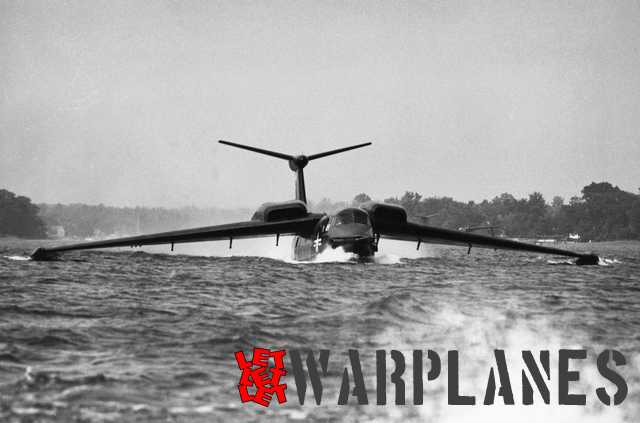
The Seamaster was planned for strategic mine laying. It could be tanked from submarines or from floating platforms. This way a relatively small number of aircraft could be used in a quick and efficient way to block harbours and sea straits for enemy vessels during an international conflict.

More important for the U.S. Navy staff was that the Seamaster could also be used as a bomber with nuclear capability. This was at that time still the strict monopoly of U.S. Air Force Strategic Air Command but also the U.S Navy hoped with the Seamaster to have its own fleet of nuclear bombers.
The two XP6M-1 prototypes were assigned the Bureau of Aeronautics registration numbers 138821 and 138822.
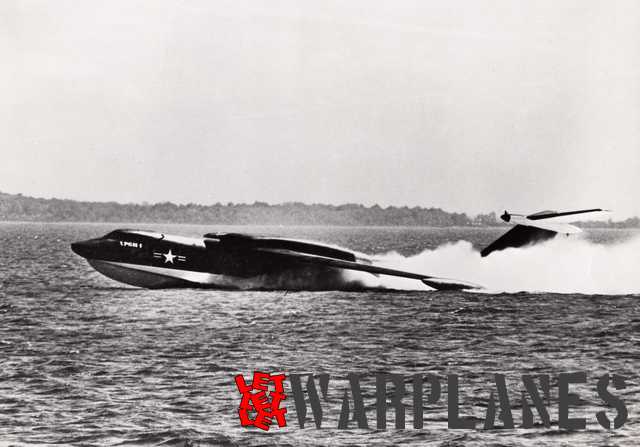
Early flight testing:
The first XP6M-1 was rolled out at the Martin plant on 21 December 1954. First flight took place on 14 July 1955; pilot on this occasion was Martin chief test pilot George Rodney. During early test flights it was discovered that use of the afterburners caused severe scorching on the fuselage. To prevent this the exhausts were lengthened and placed further outwards. The first Seamaster prototype was built under great secrecy. It was the second Seamaster prototype that was officially presented to the aviation press. The flying program with the first XP6M-1 progressed quite well until 7 December 1955. This day it was lost after a crash during a routine flight; the crew of four was sadly killed. Since no registration instruments were present, the cause of the accident was at that time unknown. As a safety measure the second Seamaster prototype was fitted with ejector seats. The working of these ejector seats was tested on the rocket sled SNORT at China Lake AFB. Also this second prototype crashed on 9 November 1956 when test pilot Bob Turner lost control during a shallow dive. This time, the crew could safely leave the plane. The cause of the crash was found to be a faulty construction of the mechanism actuating the elevator. Most likely, this was also the cause of the crash of the first prototype.
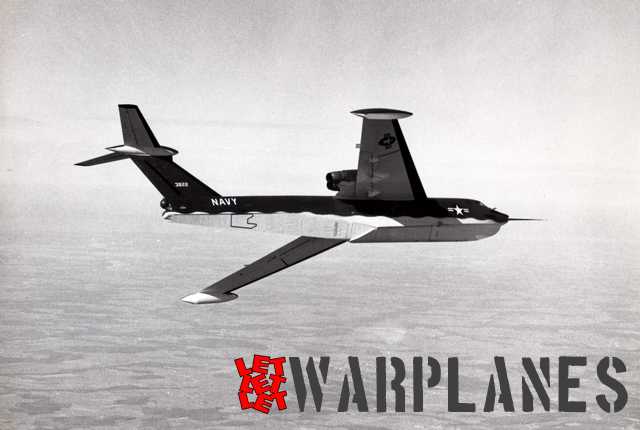
Operational but………..
Meanwhile the U.S. Navy had placed at Martin an order for six YPM-1 pre-production aircraft for operational evaluation. BuNos. assigned were 143822 – 143827. The first of these six aircraft made its first flight on 20 January 1959. Additionally a second order was placed for 30 P6M-2 final production models fitted with more powerful Pratt & Whitney J-75-P-2 jet engines. The P6M-2 also had a more extensive cockpit glazing. Because of budget cuts this order was later reduced to 24, still later to 14 and finally only three P6M-2’s were delivered (BuNos. 145877, 145878 and 145879) before the whole program was terminated. Although the Seamaster had excellent flying performances, in particular at low altitude, it never went fully operational. Main reasons for the cancellation of the Seamaster were the ever-increasing costs and the arrival of the Polaris ICBM’s fired from submarines. So, the U.S. Navy finally got its nuclear deterrent force but not in the form of the Seamaster! Also the arrival of the first of a new generation of large nuclear powered aircraft carriers, the USS Enterprise, was one of the death knells for the Seamaster.

All Seamaster were eventually dismantled and scrapped.
The only items still surviving at the Glenn L. Martin Aviation Museum are a fuselage section, two tail sections and a set of wingtip floats.
Production list:
Model No. BuNo registration Type Remarks
275 138821 XP6M-1
138822 XP6M-1
275A 143822 YP6M-1
143823 YP6M-1
143824 YP6M-1
143825 YP6M-1
143826 YP6M-1
275B 143827 YP6M-1
145876 P6M-2 not flown
145877 P6M-2
145978 P6M-2
145879 P6M-2
145880 P6M-2 not flown
145881 P6M-2 not flown
145882 P6M-2 not flown
145883 P6M-2 not flown
Total number built: 16

Further developments:
Further versions of the Seamaster that were never built were the Model 317 for an in-flight refuelling tanker version and the Model 318 for an ECRS (extended range countersurveillance) version.
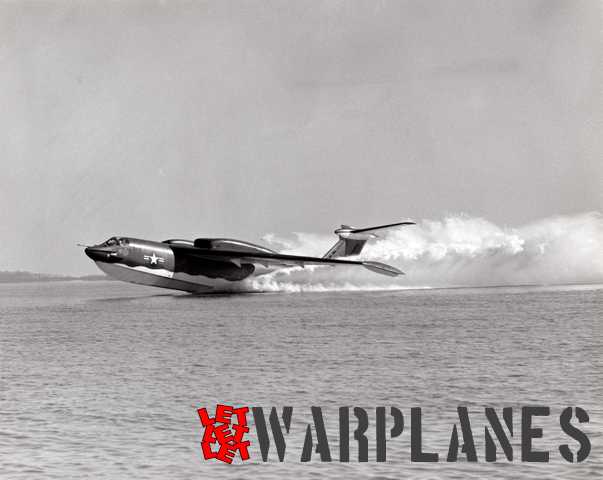
Martin had already proposed an enlarged transport flying boat powered by eight jet engines and fitted with a large bowloading nose as the Seamistress. An even larger version was planned with nuclear propulsion. Finally Martin also proposed a totally new supersonic flying boat. Nothing was finally realized and in fact the Seamaster was their last aircraft. Martin continued to work in the missile and electronics business until it merged in 1995 with Lockheed into Lockheed-Martin!
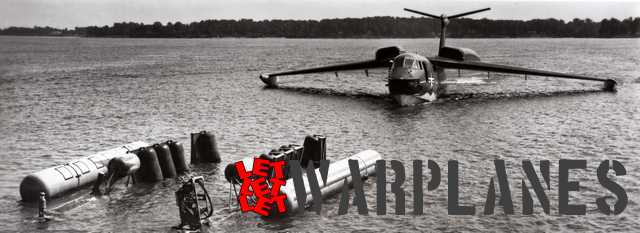
Technical details:
Power plant: four Allison J71-A-4 jet engines of 5887 kg thrust (with afterburner) for the XP6M-1 and YP6M-1. The P6M-2 was fitted with four Pratt & Whitney J75-P-2 jet engines of 7938 kg thrust
Dimensions: span 31.26 m
length 40.55 m (XP6M-1); 40.86 m (YP6M-1)
height 9.77 m (XP6M-1); 9.87 m (YP6M-1)
Weights: empty 36,465 kg (XP6M-1); 39,118 kg (YP6M-1)
loaded 72,576 kg (XP6M-1); 75,475 kg (YP6M-1)
Performances: maximum speed 966 km/h (1163 km/h for the P6M-2)
service ceiling 12,192 m
range 3200 km
Accommodation/armament:
The Seamaster had a crew of four: pilot, co-pilot, navigator/wireless operator and flight
Defensive armament: two remotely controlled 20 mm cannon in the fuselage tail
Offensive armament: a maximum total load of 13,608 kg of conventional bombs, depth charges
or a nuclear bomb. All bombs were carried internally in a watertight rotary bomb bay.
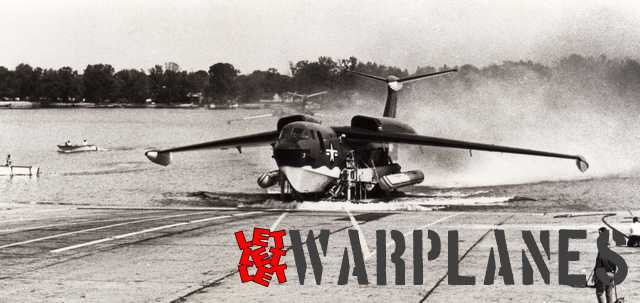
Tips for the modelbilder:
The German Airmodel had many years ago a nice 1/72 vacform model of the P6M-2. Revell has launched in the fifties an injection moulded kit at 1/144 scale of the XP6M-1. As usual for that time it was not very accurate with a moderate fit. Also painting instructions were not correct and in fact it was a more of a mix between XP6M-1 and YP6M-1 rather than an accurate model of the XP6M-1 prototype. For display, a small standard was included. In the eighties it was re-released in the Jubilee series and with some luck it still can be found. Latest releases are the XP6M-1 1/72 kit from Anigrand and the P6M-2 from Mach 2.
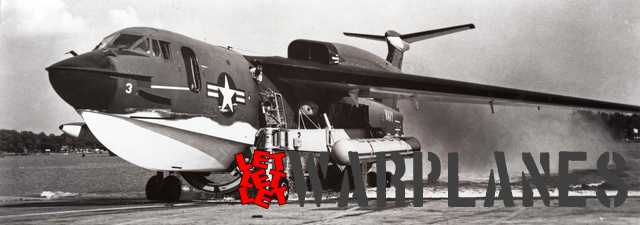
Its Sovjet counterpart, the Beriev Be-10:
The only aircraft comparable with the Seamaster was the Soviet Beriev Be-10 flying boat. Just like the Seamaster it was jet powered with swept wings. Also here, its task was that for a strategic and tactical patrol/strike aircraft with the capability to drop mines and bombs. As far as known, the Be-10 never had any foreseen nuclear tasks like the Seamaster. The 3-seat Beriev was somewhat smaller and lighter than the Seamaster with an all-up weight of 45,000 kg, a wing span of 28.6 m and a length of 31.45. It lacked the aerodynamic refinement of the Seamaster and had some lower performances with a maximum speed of 910 km/h at 5000 m. Where the Seamaster was fitted with four engines, the Be-10 only had two Lyulka AL-7PB jet engines of 7258 kg thrust each.
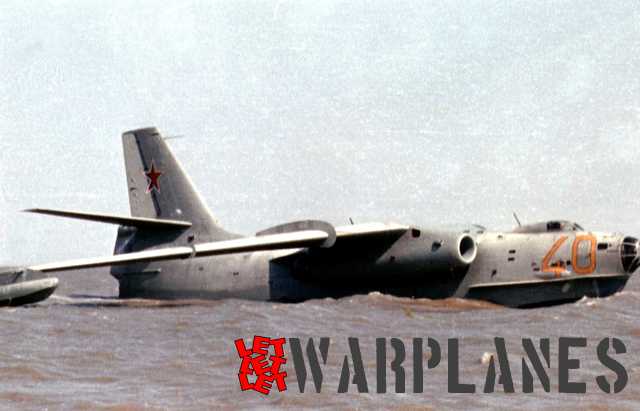
(Srecko Bradic collection)
First flight was made on 20 July 1956. A small batch of 28 was built for operational use but they were already retired in the early sixties because of unsuitability for operational use.
Nico Braas
Literature:
-Francis J. Allen, Poseidon’s giant-The story of the Martin P6M Seamaster, Air Enthusiast no.92, March/April 2001
-http://www.mdairmuseum.org/; the website of the Glenn L. Martin Aviation Museum at Middle River, Maryland
Photo sources:
Except stated otherwise all images are official press release photographs from Martin.






Also:
The Convair F2Y Sea Dart:
http://en.m.wikipedia.org/wiki/Sea_Dart
Smaller,
but still a “Flying Boat”
having landed on her hull.
The only supersonic sea plane ever built.